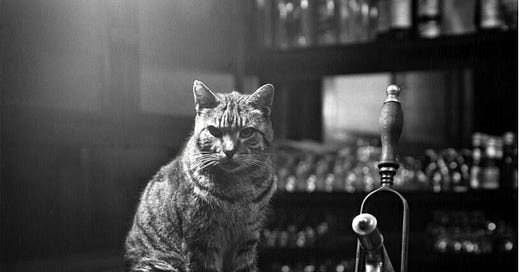Craft Lesson: Story Openings
Strong story openings offer readers the first hints of who, why, where, how, and when
Greetings to new and continuing subscribers,
Thank you for being here.
A new school year is upon us, and this also means waaay too many bags of Halloween candy are already lying in wait wherever you happen to glance at your local grocery mart and chain drugstore. 🍫 🍭
Today’s post is a condensed fiction-writing craft lesson on story openings. In preparation for the short story workshop I’m teaching this fall, I’ve been revisiting some of the materials I’ve used in previous courses, and what follows is one of my favorite fiction-writing tutorials.
—
My fall fiction workshop is offered through Stanford’s Continuing Studies program and meets online, beginning next Wednesday, 9/25, 6 PM PT, and runs for ten weeks. More information here—still a few spaces available. 📗
—
Story openings make pledges to the reader, offering the first hints of who, why, where, how, when:
1. You introduce, directly or indirectly, your subject matter. A good opening keeps the reader wondering, “What happens next?”
2. You establish your tone (is this a serious or droll or ironic voice?)
3. You present the first physical details of your setting and characters.
4. The information presented in the opening paragraphs often unbalances the reader and immediately creates the desire for immersion in the story.
5. Sometimes the story begins in the middle of things (in medias res) – this is one way some writers are able to move quickly to the essential action or problem of the story. It also creates suspense.
(I referred to Alice LaPlante’s book, The Making of a Story [Norton], when composing the list above—highly recommended.)

Story Opening 1
From Edward P. Jones’ short story, “A Rich Man” (included in All Aunt Hagar’s Children, 2006) Note how he presents the who, what, where, and alludes to the how and why in this opening:
Horace and Loneese Perkins—one child, one grandchild—lived most unhappily together for more than twelve years in Apartment 230 at Claridge Towers, a building for senior citizens at 1221 M Street, N.W. They moved there in 1977, the year they celebrated forty years of marriage, the year they made love for the last time—Loneese kept a diary of sorts, and that fact was noted on one day of a week when she noted nothing else. “He touched me,” she wrote, which had always been her diary euphemism for sex. That was also the year they retired, she as a pool secretary at the Commerce Department, where she had known one lover, and he as a civilian employee at the Pentagon, as the head of veteran records.
Story Opening 2
From “A Relative Stranger” by Charles Baxter
I was separated from my biological mother when I was four months old. Everything from that period goes through the wash of my memory and comes out clean, blank. The existing snapshots of my mother show this very young woman holding me, a baby, at arm’s length, like a caught fish, outside in the blaring midday summer sunlight. She’s got clothes up on the clothesline in the background, little cotton infant things. In one picture a spotted dog, a mongrel combination of Labrador and Dalmatian, is asleep beside the bassinet. I’d like to know what the dog’s name was, but time has swallowed that information. In another picture, a half-empty bottle of Grain Belt beer stands on the lawn near a wading pool. My mother must have figured that if she could have me, at the age of seventeen, she could also have a beer.
This story is one of my favorites by Baxter (you’ll find it in his 1990 collection of the same name). Underlying its darkly comic surface and the narrator’s jaunty tone is a deep reservoir of sadness and resentment. When the narrator meets his half-brother, the title character, things veer off the rails pretty quickly.
Notice how Baxter’s first-person narrator’s reportorial eye, like Jones’ third-person/first-person hybrid—the quoted diary allows Jones to use first-person while telling the larger story in third—serves up arresting, granular detail. Both stories’ openings also locate their characters in highly specific settings and hint at probable sorrows and regrets, and perhaps a desire for revenge and/or acknowledgment and love.
Jones and Baxter are masters of compression, a crucial skill for short story writers. In just a few lines, they’ve introduced us to complex situations, ones likewise being experienced by characters with conflicting desires in their private hearts. Many stories, especially the good ones, traffic in their characters’ evasions and attempts to acquire, but more often deflect, self-knowledge.
—
Next week’s post: An interview with Sue Mell, who talked with me recently about her new story collection, published on September 3, A New Day (She Writes Press)







Thanks for this, Christine. Nice way to start a writing day here. Looking forward to the next installment.